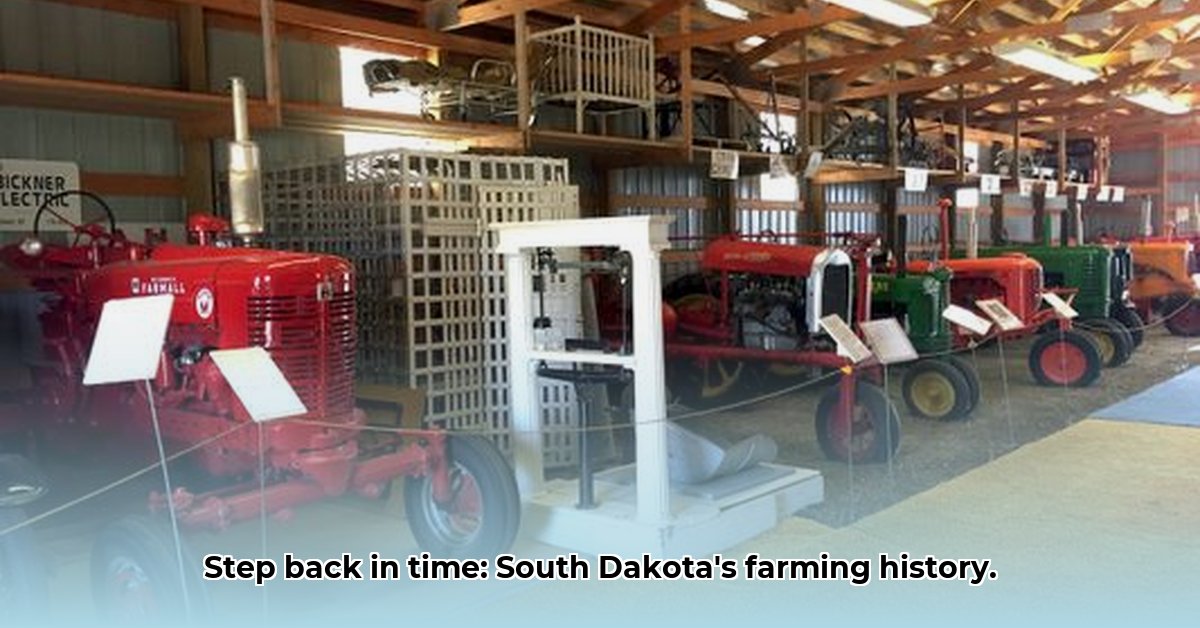
Tractor Museum Kimball SD: A Journey Through Sustainable Farming
The South Dakota Tractor Museum in Kimball isn't just a collection of old tractors; it's a captivating journey through the evolution of farming, showcasing both remarkable progress and the urgent need for sustainable practices. Forget dusty displays; imagine stepping into a living narrative of human ingenuity, hard work, and the ongoing quest for better ways to feed our world. This isn't just about machines; it's about the people who shaped South Dakota's agricultural history—a story interwoven with innovation, adaptation, and the enduring challenge of balancing progress with environmental responsibility. See more vintage tractor photos.
From Horsepower to Horsepower (of a Different Kind): A South Dakota Story
Entering the museum, you're immediately surrounded by gleaming metal giants. Each tractor, a testament to innovation, whispers tales of progress, from the days of horse-drawn plows to the massive machines that dominate our fields today. The transformation is breathtaking! But this isn't solely about machines; it's about the people who conceived, built, utilized, and ultimately shaped the landscape of South Dakota agriculture. The museum masterfully showcases this human element, making the technological advancements relatable and deeply resonant. However, this journey of progress also forces reflection: What price did we pay for this astonishing efficiency? Did we sacrifice something along the way?
Did the increased yields from mechanized farming outweigh its environmental consequences? The museum's exhibits subtly raise this crucial question.
The sheer scale of the later models, juxtaposed with the simpler, more sustainable methods of the past, prompts serious consideration: How do we retain the benefits of modern farming without harming the environment? Can we truly have both efficiency and sustainability? This is where the museum's power lies—provoking crucial questions about the future of our food systems. The museum subtly suggests that the answer lies in a blend of historical lessons and innovative solutions.
More Than Metal: The Museum's Silent Storytellers
The Kimball museum isn't simply a collection; it's a chronological narrative, a time capsule of agricultural advancement. Early models, simple yet robust, stand alongside modern behemoths, highlighting the dramatic shift in farming practices. Each leap forward in tractor technology represented an increase in efficiency, but also signified profound changes in our relationship with the land and its precious resources. These weren't mere machines; they represented fundamental shifts in societal structures and the communities that relied on them. The tractors themselves bear silent witness to a transformational era, their metallic bodies echoing the sounds of progress and the whispers of change.
The museum houses over 100 tractors, representing nearly a century of agricultural evolution in South Dakota.
"The museum's collection offers a powerful visual representation of the interconnectedness between agricultural technology, societal change, and environmental impact," notes Dr. Emily Carter, Agricultural Historian at the University of South Dakota. "It seamlessly blends history, technology, and sustainability into a compelling narrative."
The Two Sides of Progress: Weighing the Good with the Bad
The increased food production enabled by mechanization is undeniable; we feed more people than ever before, thanks to these powerful machines. But this efficiency came at a cost: increased reliance on fossil fuels, chemical fertilizers, and pesticides. The museum implicitly portrays this trade-off. The sheer size and power of the later models, contrasted with the simpler past, sparks introspection: How can we maintain the incredible benefits of modern farming without causing environmental damage? Can we achieve both efficiency and sustainability?
The museum showcases the shift from horse-drawn plows to massive gasoline-powered tractors, illustrating a massive increase in efficiency, but also raising questions about long-term environmental sustainability.
Lessons from the Past, Seeds for a Sustainable Future
The museum's scope extends beyond tractors. Tools, kitchen utensils, and everyday items vividly depict rural life in bygone eras. These artifacts reveal a self-sufficient lifestyle and close-knit communities, offering a crucial lesson: Sustainable farming isn't solely about technology; it's about community, resource management, and respecting the land. This contrasts sharply with our often-disconnected modern food systems, urging us to consider the long-term impacts of current practices. The museum reminds us that true sustainability demands a holistic approach.
Building a Better Tomorrow: Practical Steps Towards a Sustainable Future
The South Dakota Tractor Museum serves as a bridge between past and future, offering valuable lessons for sustainable agricultural practices. We can build upon this historical context by considering these key insights:
- Embrace Precision Agriculture: Utilize technology to optimize resource use and minimize waste.
- Explore Renewable Energy: Transition away from fossil fuels towards renewable energy sources.
- Prioritize Soil Health: Implement regenerative agriculture practices to improve soil health and reduce reliance on synthetic inputs.
The South Dakota Tractor Museum in Kimball isn't just a repository of old machinery; it's a call to action, challenging us to rethink our relationship with food and farming, inspiring innovation and sustainable solutions to feed a growing global population while preserving the planet's health. The story these tractors tell is powerful—a narrative of progress, responsibility, and the urgent need for sustainable practices. It's a story that begs to be heard, understood, and acted upon.